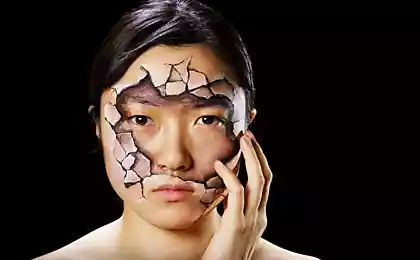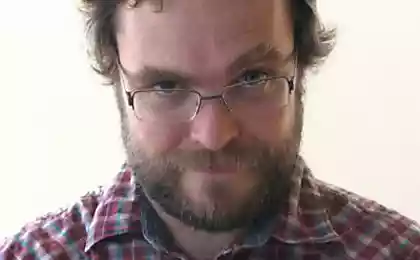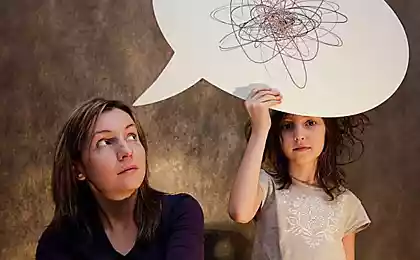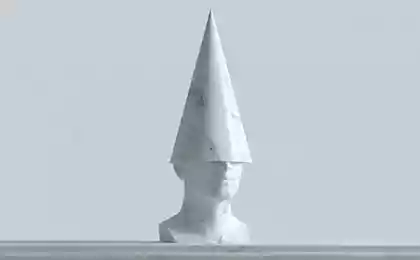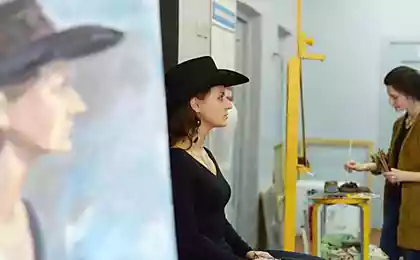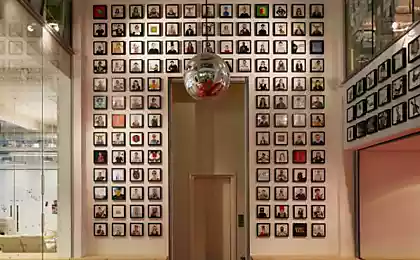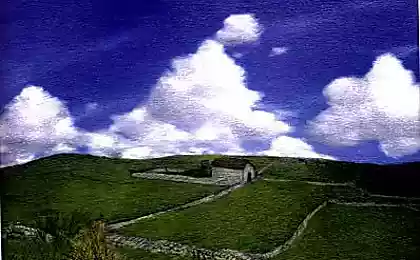850
What you need to know to draw well
David Reba, illustrator and concept artist, shared with emerging artists list of knowledge that must be purchased in order to get realistic work. No matter what you draw - pencil, brush, or crayon on the tablet - these laws are immutable.
Website in store for you the article, which clearly and understandably set out an action plan for the young artist, who decided to learn on their own.
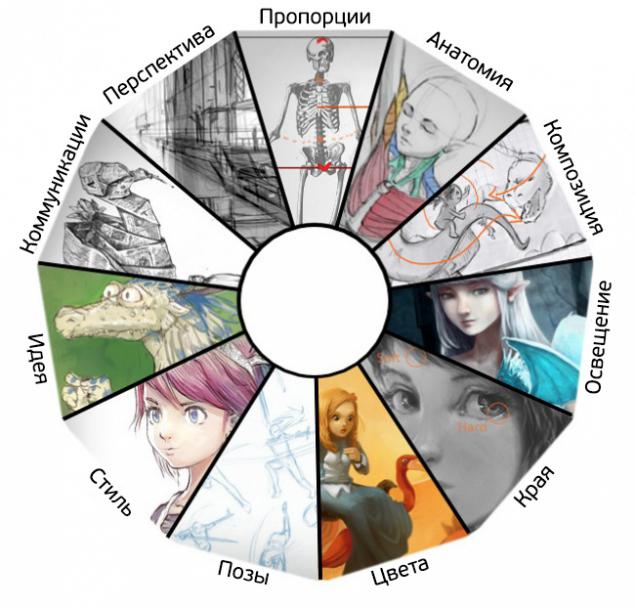
"It's hard to choose what to study for those who want to do the drawing ... I get a lot of letters on this subject; Beginners usually feel lost, lost among all this. So I decided to make a kind of table of contents - the list of what we need to learn and practice what is necessary to create quality work and learn how to draw better. Every item is equipped with my simple comment to answer the question "what", "why", "how". Thus it will be easier to find the necessary material by using your favorite search engine. Also, this material can be useful for those who want to improve the quality of their work. I will use these starting points in their exercises and finding errors in their work. If you are just starting to draw - that's my advice: Be scholars, learn the basics and focus on certain elements in turn.
1. Perspective What it is What is the purpose What we must know about it

Working on the basis of two vanishing points (green and red).
2. Proportions What it is What is the purpose What we must know about it

The orange line shows the basic proportions and ratios in the picture (left) and outline (right).
3. Anatomy What it is What is the purpose What we must know about it

Exercise on the drawing hand (left), drawing on the skeleton (in the middle), the study of muscle (right).
4. The composition of What it is What is the purpose What we must know about it

Various sketches before working; Music Search.
5. Lighting What it is What is the purpose What we must know about it

Left: it shows the difference in the light material. Right: the use of light to show the second character (drop shadow).
6. The edges of the What it is What is the purpose What we must know about it

Left and center: the edge of the figure, the right thickness contours.
7. Color What it is What is the purpose What we must know about it

Top left: 3 color range, reflecting the palette for the job; three additional colors.
8. Poses What it is What is the purpose What we must know about it

Left: posture penguin at the zoo, in the middle: the study poses the motion, right: warm-up sketches of figures.
9. Style What it is What is the purpose What we must know about it

Left: classic black and white portrait in the middle: a highly stylized (and strange) character and drawing style, right: my comic style.
10. The idea of What it is What is the purpose What we must know about it

A new type of technology (left), a new kind of dragon (center) and a medieval house that has not been seen up to this figure (right).
11. Communication What it is What is the purpose What we must know about it

Figure sheet does not carry specific information (to the left), but the complex parts and facial expression can already tell a story (in the middle). Such a character like a vulture from newspapers (right) could make think deeply about the problem of unethical journalism.
Conclusion: The significant illyuziyaEsli you can properly combine all of the above, you'll get a sense of the scope, depth, texture, light, movement and life on a static surface. It will immerse your audience into your world, and you can easily transfer them to their ideas, messages or tell a story. And finally, as I see the result: art to create the illusion of meaningful knowledge, observation, imagination , but first you need to practice, practice and practice Build your unique experience & quot ;.
See also 28 useful websites for artists
Several different applications for creative people
via habrahabr.ru/company/krita/
Website in store for you the article, which clearly and understandably set out an action plan for the young artist, who decided to learn on their own.

"It's hard to choose what to study for those who want to do the drawing ... I get a lot of letters on this subject; Beginners usually feel lost, lost among all this. So I decided to make a kind of table of contents - the list of what we need to learn and practice what is necessary to create quality work and learn how to draw better. Every item is equipped with my simple comment to answer the question "what", "why", "how". Thus it will be easier to find the necessary material by using your favorite search engine. Also, this material can be useful for those who want to improve the quality of their work. I will use these starting points in their exercises and finding errors in their work. If you are just starting to draw - that's my advice: Be scholars, learn the basics and focus on certain elements in turn.
1. Perspective What it is What is the purpose What we must know about it

Working on the basis of two vanishing points (green and red).
2. Proportions What it is What is the purpose What we must know about it

The orange line shows the basic proportions and ratios in the picture (left) and outline (right).
3. Anatomy What it is What is the purpose What we must know about it

Exercise on the drawing hand (left), drawing on the skeleton (in the middle), the study of muscle (right).
4. The composition of What it is What is the purpose What we must know about it

Various sketches before working; Music Search.
5. Lighting What it is What is the purpose What we must know about it

Left: it shows the difference in the light material. Right: the use of light to show the second character (drop shadow).
6. The edges of the What it is What is the purpose What we must know about it

Left and center: the edge of the figure, the right thickness contours.
7. Color What it is What is the purpose What we must know about it

Top left: 3 color range, reflecting the palette for the job; three additional colors.
8. Poses What it is What is the purpose What we must know about it

Left: posture penguin at the zoo, in the middle: the study poses the motion, right: warm-up sketches of figures.
9. Style What it is What is the purpose What we must know about it

Left: classic black and white portrait in the middle: a highly stylized (and strange) character and drawing style, right: my comic style.
10. The idea of What it is What is the purpose What we must know about it

A new type of technology (left), a new kind of dragon (center) and a medieval house that has not been seen up to this figure (right).
11. Communication What it is What is the purpose What we must know about it

Figure sheet does not carry specific information (to the left), but the complex parts and facial expression can already tell a story (in the middle). Such a character like a vulture from newspapers (right) could make think deeply about the problem of unethical journalism.
Conclusion: The significant illyuziyaEsli you can properly combine all of the above, you'll get a sense of the scope, depth, texture, light, movement and life on a static surface. It will immerse your audience into your world, and you can easily transfer them to their ideas, messages or tell a story. And finally, as I see the result: art to create the illusion of meaningful knowledge, observation, imagination , but first you need to practice, practice and practice Build your unique experience & quot ;.
See also 28 useful websites for artists
Several different applications for creative people
via habrahabr.ru/company/krita/





